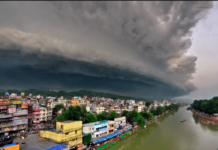Introduction
When it comes to correction leaks, it is crucial to act swiftly and efficiently to prevent further damage and costly repairs. A correction leak can lead to a myriad of issues including mold growth, structural damage, and compromised indoor air quality. In this comprehensive guide, we will explore practical tips and strategies to help you identify, locate, and fix correction leaks in your home or building.
Identifying a Correction Leak
The first step in addressing a correction leak is to identify its source. Here are some common signs that may indicate a correction leak:
1. Water Stains: Look for water stains on ceilings, walls, or floors. These stains may appear discolored or have a distinct musty odor.
2. Mold or Mildew Growth: Mold and mildew thrive in damp environments, so their presence may indicate a correction leak.
3. Peeling Paint or Wallpaper: Moisture from a correction leak can cause paint or wallpaper to peel or bubble.
4. Warped or Damaged Wood: Water exposure can cause wood to warp or deteriorate over time.
Locating the Correction Leak
Once you have identified potential signs of a correction leak, the next step is to locate the source of the leak. Here are some strategies to help you pinpoint the exact location of the correction leak:
1. Check Roofing and Gutters: Inspect your roof for missing shingles, damaged flashing, or clogged gutters that may be causing water to seep into your home.
2. Examine Plumbing Fixtures: Check for leaks around plumbing fixtures such as sinks, toilets, and showers. A dripping faucet or loose connection could be the culprit.
3. Inspect Windows and Doors: Improperly sealed windows or doors can allow water to enter your home during rainstorms.
4. Look at the Foundation: Cracks in the foundation or basement walls can provide an entry point for correction leaks.
Fixing the Correction Leak
Once you have located the correction leak, it is essential to take action promptly to prevent further damage. Here are some practical tips for fixing a correction leak:
1. Repair Roof Damage: Replace missing shingles, repair damaged flashing, and clean out gutters to prevent water from entering your home.
2. Seal Plumbing Leaks: Tighten loose connections, replace worn-out washers, or call a professional plumber to fix any leaks around plumbing fixtures.
3. Realign Windows and Doors: Caulk around windows and doors to create a watertight seal and prevent water intrusion.
4. Seal Foundation Cracks: Fill cracks in the foundation or basement walls with waterproof sealant to prevent correction leaks.
5. Install a Vapor Barrier: In areas prone to high humidity, consider installing a vapor barrier to prevent moisture from seeping into your home.
6. Address Interior Damage: Repair any water-damaged drywall, insulation, or flooring to prevent mold growth and further structural damage.
Preventing Future Correction Leaks
To avoid dealing with correction leaks in the future, here are some preventative measures you can take:
1. Schedule Regular Inspections: Inspect your roof, plumbing fixtures, windows, and doors regularly to catch any potential issues before they escalate into correction leaks.
2. Maintain Gutters and Downspouts: Keep gutters and downspouts clean and free of debris to ensure proper drainage away from your home.
3. Monitor Indoor Humidity Levels: Use a dehumidifier to maintain indoor humidity levels between 30-50% to prevent moisture buildup.
4. Invest in Proper Ventilation: Ensure that your home is properly ventilated, especially in areas prone to high humidity like bathrooms and kitchens.
5. Seek Professional Help: If you are unsure how to address a correction leak or suspect hidden water damage, consult with a professional contractor or plumber for assistance.
Frequently Asked Questions (FAQs)
1. How do I know if I have a correction leak?
Signs of a correction leak include water stains, mold growth, peeling paint, and warped wood.
2. What should I do if I discover a correction leak?
Identify the source of the leak, fix it promptly, and address any interior damage to prevent further issues.
3. Can I fix a correction leak myself?
Simple correction leaks like a dripping faucet or loose caulk can be fixed DIY, but for more complex issues like roof damage, it’s best to consult a professional.
4. How can I prevent correction leaks in the future?
Regular inspections, maintenance of gutters and downspouts, monitoring indoor humidity levels, proper ventilation, and seeking professional help when needed can help prevent correction leaks.
5. Are correction leaks covered by homeowner’s insurance?
Coverage for correction leaks may vary depending on the cause of the leak and your insurance policy. It’s best to check with your insurance provider to understand your coverage.
In conclusion, addressing a correction leak promptly and effectively is essential to protect your home from water damage and potential health hazards. By following the tips and strategies outlined in this guide, you can identify, locate, and fix correction leaks while implementing preventative measures to mitigate future issues. Remember, when in doubt, always seek professional help to ensure the safety and integrity of your home.








